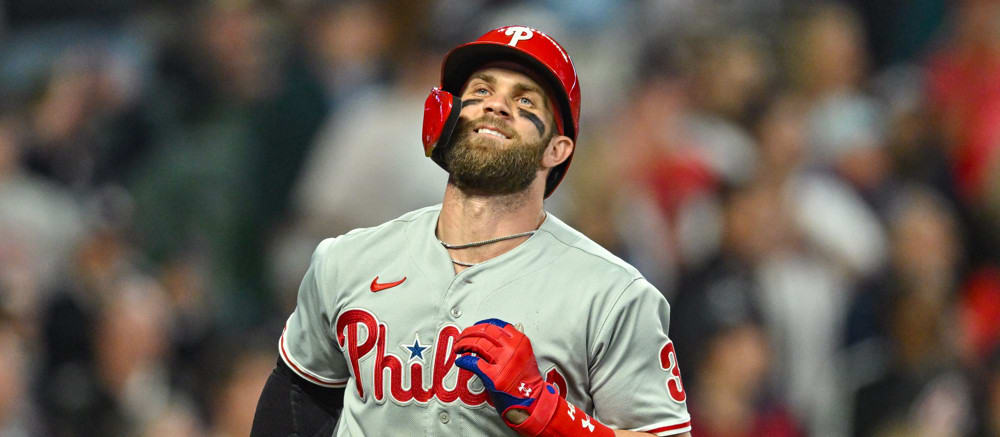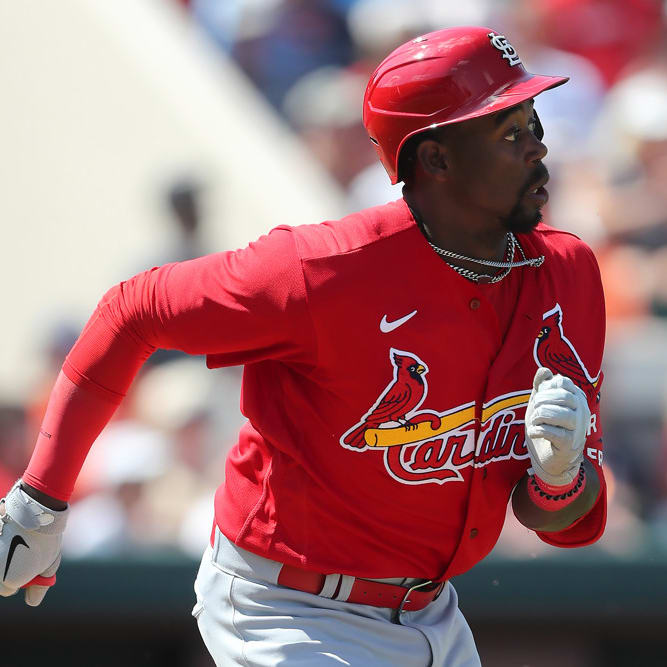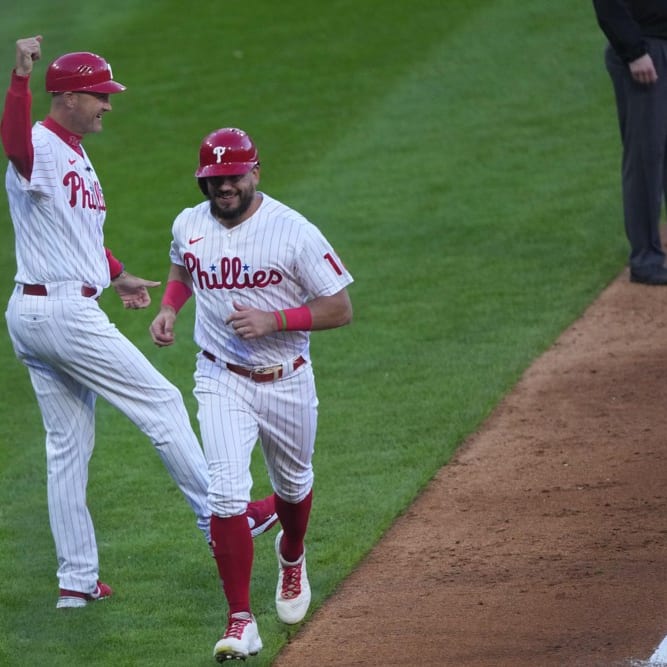This article is part of our MLB Barometer series.
With September right around the corner, roster construction is about to change. The expanded 28-man rosters don't have nearly the same effect that the old 40-man rosters used to have, but there's still an observable impact. That's especially true among the worst teams in the league, who shift even more brazenly into preparing for the future over the season's final month.
For those playing in deep fantasy leagues, the September roster churn can turn up a few gems who can provide a small edge in the last few weeks, but be warned: A lot of players who earn at-bats on bad teams in September are (perhaps unsurprisingly) not players you want in your lineup.
There's also the fact that bad teams spread their at-bats around more down the stretch in an effort to see what talent lurks in the corners of their roster. Teams that began last September within five games of a playoff spot finished the month with an average of 5.6 qualified hitters; teams that began the month out of the race finished it with just 4.4 qualified hitters. That means that if you're targeting someone you're hoping is going to earn at-bats on a bad team in the final few weeks, there's a good chance the role he earns isn't a full-time one.
Among the remaining full-timers on bad teams, there are tons of landmines. Among contenders, nine of the 90 qualified hitters (10 percent) last September were below-replacement level for the month. Among noncontenders, 13 of
With September right around the corner, roster construction is about to change. The expanded 28-man rosters don't have nearly the same effect that the old 40-man rosters used to have, but there's still an observable impact. That's especially true among the worst teams in the league, who shift even more brazenly into preparing for the future over the season's final month.
For those playing in deep fantasy leagues, the September roster churn can turn up a few gems who can provide a small edge in the last few weeks, but be warned: A lot of players who earn at-bats on bad teams in September are (perhaps unsurprisingly) not players you want in your lineup.
There's also the fact that bad teams spread their at-bats around more down the stretch in an effort to see what talent lurks in the corners of their roster. Teams that began last September within five games of a playoff spot finished the month with an average of 5.6 qualified hitters; teams that began the month out of the race finished it with just 4.4 qualified hitters. That means that if you're targeting someone you're hoping is going to earn at-bats on a bad team in the final few weeks, there's a good chance the role he earns isn't a full-time one.
Among the remaining full-timers on bad teams, there are tons of landmines. Among contenders, nine of the 90 qualified hitters (10 percent) last September were below-replacement level for the month. Among noncontenders, 13 of the 62 qualified hitters (21 percent) produced negative WAR. Here are all 13, in an effort to cruelly throw some cold water on your excitement about picking up that boring but supposedly solid regular who you think is about to compile some counting stats for you down the stretch:
| Player | HR | R | RBI | SB | AVG/OBP/SLG | wRC+ |
|---|---|---|---|---|---|---|
| MJ Melendez | 4 | 18 | 16 | 2 | .207/.299/.372 | 89 |
| Luke Voit | 4 | 9 | 12 | 0 | .234/.292/.363 | 84 |
| Luis Garcia | 2 | 10 | 17 | 1 | .241/.282/.371 | 80 |
| Jonathan India | 2 | 10 | 12 | 1 | .217/.314/.311 | 77 |
| Spencer Steer | 2 | 12 | 8 | 0 | .211/.306/.326 | 77 |
| Franmil Reyes | 1 | 9 | 8 | 0 | .193/.297/.261 | 66 |
| Michael Toglia | 1 | 9 | 10 | 1 | .214/.277/.359 | 63 |
| C.J. Cron | 5 | 12 | 16 | 0 | .185/.276/.370 | 62 |
| Brian Anderson | 2 | 12 | 9 | 0 | .192/.264/.283 | 57 |
| Wilmer Flores | 3 | 11 | 11 | 0 | .155/.258/.272 | 57 |
| Tommy Pham | 2 | 13 | 9 | 1 | .176/.268/.269 | 52 |
| Randal Grichuk | 6 | 10 | 13 | 1 | .179/.204/.400 | 48 |
| JJ Bleday | 1 | 9 | 9 | 1 | .135/.248/.213 | 36 |
One or two of the names above may have done enough compiling to get a few fantasy teams just over the line in one of the counting-stat categories, but many did more harm than good. If you're chasing playing time down the stretch, you just might end up with this year's JJ Bleday. For now, we'll move on to our regularly scheduled programming, taking a look at the players who have impressed in recent weeks as well as some who may end up on a similarly unappealing table next season.
RISERS
 Bryce Harper, 1B, Phillies: Harper's Tommy John surgery, a procedure he underwent in late November of last year, was initially expected to keep him out until around the midpoint of this season, so perhaps that's the point we should use when judging his numbers. It was a remarkable feat of both medical science and personal determination that he was able to return as early as May 2, but while his .283/.382/.386 slash line (110 wRC+) through the end of June was admirable when viewed in proper context, it was hardly Harper-esque. His .303/.386/.438 line (128 wRC+) in July represented modest progress, but he still homered just twice that month. August has seen him finally come roaring back to MVP form, however, as he's slashed .366/.455/.774 (220 wRC+), homering nine times in 25 games after clearing the fence just five times in 73 games up to that point. Harper's underlying power numbers have been as good as it gets this month, as he owns a 22.5 percent barrel rate and 60.6 percent hard hit rate. That certainly doesn't look like a player who recently returned far earlier than expected from a major surgery.
Bryce Harper, 1B, Phillies: Harper's Tommy John surgery, a procedure he underwent in late November of last year, was initially expected to keep him out until around the midpoint of this season, so perhaps that's the point we should use when judging his numbers. It was a remarkable feat of both medical science and personal determination that he was able to return as early as May 2, but while his .283/.382/.386 slash line (110 wRC+) through the end of June was admirable when viewed in proper context, it was hardly Harper-esque. His .303/.386/.438 line (128 wRC+) in July represented modest progress, but he still homered just twice that month. August has seen him finally come roaring back to MVP form, however, as he's slashed .366/.455/.774 (220 wRC+), homering nine times in 25 games after clearing the fence just five times in 73 games up to that point. Harper's underlying power numbers have been as good as it gets this month, as he owns a 22.5 percent barrel rate and 60.6 percent hard hit rate. That certainly doesn't look like a player who recently returned far earlier than expected from a major surgery.
 Trea Turner, SS, Phillies: I featured Harper and Turner as back-to-back fallers just over a month ago, so it seems only fair to include both teammates as risers this week following a pair of very encouraging Augusts. For Turner, that's taken the form of a .317/.357/.644 line with eight homers, a mark that ties his total from the first three months of the campaign. The star shortstop's first season in Philadelphia has played out in a very predictable way. After signing a $300 million deal over the winter, he struggled in exactly the way many big signings typically struggle in their first year with a new team: by pressing and trying to do too much with pitches he couldn't actually do damage on. More bad swings at pitches outside the zone leads to more strikeouts, which in turn lead to worse performance:
Trea Turner, SS, Phillies: I featured Harper and Turner as back-to-back fallers just over a month ago, so it seems only fair to include both teammates as risers this week following a pair of very encouraging Augusts. For Turner, that's taken the form of a .317/.357/.644 line with eight homers, a mark that ties his total from the first three months of the campaign. The star shortstop's first season in Philadelphia has played out in a very predictable way. After signing a $300 million deal over the winter, he struggled in exactly the way many big signings typically struggle in their first year with a new team: by pressing and trying to do too much with pitches he couldn't actually do damage on. More bad swings at pitches outside the zone leads to more strikeouts, which in turn lead to worse performance:
| Period | O-Swing% | K% | AVG/OBP/SLG | wRC+ |
|---|---|---|---|---|
| 2015-2022 | 30.6% | 18.0% | .302/.355/.487 | 125 |
| 2023, March-July | 39.1% | 24.0% | .242/.296/.378 | 81 |
| 2023, August | 33.7% | 17.9% | .317/.357/.644 | 164 |
As that O-Swing% column indicates, even this latest version of Turner isn't 100 percent back to peak form in that area, but he's made a large enough stride in terms of correcting his chase-rate issues that he's been able to cut his strikeout rate back down to its previous levels. Turner has never been a plus power hitter (despite his home run binge this month), so keeping his strikeout rate in that range will be vital for him maintaining his superstar status going forward. A strong September will keep him in first-round consideration over the winter, though a relative decline in steals (he finished in the top five for five straight seasons before slipping to eighth last year and 21st this season) may push him into the second round.
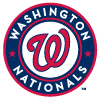 Keibert Ruiz, C, Nationals: Ruiz made a ton of contact in the early part of his MLB career, but he didn't hit the ball with enough authority to do a meaningful amount of damage. His 11.5 percent career strikeout rate prior to this season was among the best in the league, but it only helped him to a .255 average thanks in part to a low 31.8 percent hard-hit rate. He'd also homered just 11 times in 537 plate appearances. Throughout the first half of this season, the story was similar, as Ruiz entered the break with a single-digit strikeout rate (9.2 percent) but was hitting just .226/.279/.360. His nine homers did at least already represent a career high, however, and his .223 BABIP hinted that his numbers could improve in the second half. That has indeed happened, particularly in recent weeks, as a 1.023 OPS over his last 20 games is part of a second half in which he's hit .328/.385/.545. He's also cleared the fence seven times in 148 plate appearances; that pro-rates to 28.3 per 600 plate appearances, up from 17.7 in the first half and 12.3 over his first three seasons. Ruiz is fast becoming another lesson that young hitters who do one thing very well are worth keeping an eye on even if the results aren't yet there.
Keibert Ruiz, C, Nationals: Ruiz made a ton of contact in the early part of his MLB career, but he didn't hit the ball with enough authority to do a meaningful amount of damage. His 11.5 percent career strikeout rate prior to this season was among the best in the league, but it only helped him to a .255 average thanks in part to a low 31.8 percent hard-hit rate. He'd also homered just 11 times in 537 plate appearances. Throughout the first half of this season, the story was similar, as Ruiz entered the break with a single-digit strikeout rate (9.2 percent) but was hitting just .226/.279/.360. His nine homers did at least already represent a career high, however, and his .223 BABIP hinted that his numbers could improve in the second half. That has indeed happened, particularly in recent weeks, as a 1.023 OPS over his last 20 games is part of a second half in which he's hit .328/.385/.545. He's also cleared the fence seven times in 148 plate appearances; that pro-rates to 28.3 per 600 plate appearances, up from 17.7 in the first half and 12.3 over his first three seasons. Ruiz is fast becoming another lesson that young hitters who do one thing very well are worth keeping an eye on even if the results aren't yet there.
 Cole Ragans, SP, Royals: Every year, there are one or two starting pitchers who put together a second half that's promising enough to shoot them up next year's draft boards, placing them next to pitchers who have been producing similar numbers for far longer. Ragans looks like that guy. A first-round pick back in 2016, Ragans produced a 4.95 ERA in nine starts as a rookie for the Rangers last season and had a 5.92 ERA across 17 relief appearances this year before being dealt to the Royals for three months of Aroldis Chapman. He's caught fire with his new club, posting a 1.73 ERA across seven starts, a number that looks well-deserved according to his 1.68 FIP. His 33.9 percent strikeout rate is elite, while he's been better than average in both walk rate (6.7 percent) and groundball rate (46.9 percent) for good measure. He's been particularly dominant over his last two starts — admittedly against the Pirates and Athletics — allowing no runs on five hits and a walk across 13 innings while striking out 20 batters. His command of his five-pitch arsenal and ability to touch triple-digits has him looking like a frontline arm, and with each outing in which he continues to pitch like one down the stretch, it's becoming more and more likely that he won't come at a bargain price next season.
Cole Ragans, SP, Royals: Every year, there are one or two starting pitchers who put together a second half that's promising enough to shoot them up next year's draft boards, placing them next to pitchers who have been producing similar numbers for far longer. Ragans looks like that guy. A first-round pick back in 2016, Ragans produced a 4.95 ERA in nine starts as a rookie for the Rangers last season and had a 5.92 ERA across 17 relief appearances this year before being dealt to the Royals for three months of Aroldis Chapman. He's caught fire with his new club, posting a 1.73 ERA across seven starts, a number that looks well-deserved according to his 1.68 FIP. His 33.9 percent strikeout rate is elite, while he's been better than average in both walk rate (6.7 percent) and groundball rate (46.9 percent) for good measure. He's been particularly dominant over his last two starts — admittedly against the Pirates and Athletics — allowing no runs on five hits and a walk across 13 innings while striking out 20 batters. His command of his five-pitch arsenal and ability to touch triple-digits has him looking like a frontline arm, and with each outing in which he continues to pitch like one down the stretch, it's becoming more and more likely that he won't come at a bargain price next season.
 Brandon Williamson, SP, Reds: The Reds have been a fun story this season, but if they're to remain in the playoff mix, they need more from a rotation that ranks 28th in ERA and that now looks like it won't be getting back Nick Lodolo (leg) for the stretch run. Williamson didn't look like anything more than an innings-eater at best in the early part of the season, posting a 4.85 ERA across his first 14 starts (which were also his first 14 starts in the majors). He struck out just 19.1 percent of the batters he faced while walking 10.1 percent, leading to a 5.25 FIP which suggested things could be even worse. His last five outings have seen a dramatic improvement in his underlying numbers, however, with his strikeout rate jumping to 26.4 percent while his walk rate fell to 3.3 percent. That helped him to a 2.70 ERA, a mark not out of line with his 2.83 FIP. The fact that his recent run comes as he's used his changeup 21.0 percent of the time, up from 13.7 percent prior to that point, makes it easier to buy into him as a new pitcher, as does the fact that his velocity has steadily gone up throughout the year, sitting at 93.4 mph over his last five outings compared to 91.8 mph over his first five. It's too early to anoint him as the frontline starter he's been for most of August, but there's enough here to suggest his season-long numbers don't reflect his current talent.
Brandon Williamson, SP, Reds: The Reds have been a fun story this season, but if they're to remain in the playoff mix, they need more from a rotation that ranks 28th in ERA and that now looks like it won't be getting back Nick Lodolo (leg) for the stretch run. Williamson didn't look like anything more than an innings-eater at best in the early part of the season, posting a 4.85 ERA across his first 14 starts (which were also his first 14 starts in the majors). He struck out just 19.1 percent of the batters he faced while walking 10.1 percent, leading to a 5.25 FIP which suggested things could be even worse. His last five outings have seen a dramatic improvement in his underlying numbers, however, with his strikeout rate jumping to 26.4 percent while his walk rate fell to 3.3 percent. That helped him to a 2.70 ERA, a mark not out of line with his 2.83 FIP. The fact that his recent run comes as he's used his changeup 21.0 percent of the time, up from 13.7 percent prior to that point, makes it easier to buy into him as a new pitcher, as does the fact that his velocity has steadily gone up throughout the year, sitting at 93.4 mph over his last five outings compared to 91.8 mph over his first five. It's too early to anoint him as the frontline starter he's been for most of August, but there's enough here to suggest his season-long numbers don't reflect his current talent.
 Mitch Garver, C, Rangers: Garver has produced strong numbers in the not-too-distant past, but he was a forgotten man last winter after an injury-filled season in 2022 left him with not enough games behind the plate to qualify as anything other than a designated hitter in most leagues. His role as Jonah Heim's backup further reduced his early-season fantasy appeal, and the knee sprain that kept him out for most of April and all of May meant that virtually everyone who took a chance on him would have dropped him by the time he finally got healthy. He hit a respectable .250/.336/.400 with three homers across June and July, but he was limited to a part-time role, playing 30 games across the two months. A brief trip to the injured list for Heim in early August opened up extra at-bats for Garver, however, and he hit so well that he's become the primary designated hitter since Heim's return. For the month of August, Garver is slashing .317/.404/.659 (good for a 187 wRC+) with eight homers, four of which have come in his last six games. His quality of contact has been excellent, as he owns a 17.7 percent barrel rate and 50.0 percent hard hit rate for the month. One good month doesn't erase all of Garver's durability concerns, but it serves as a reminder of how good he can still be when his body allows.
Mitch Garver, C, Rangers: Garver has produced strong numbers in the not-too-distant past, but he was a forgotten man last winter after an injury-filled season in 2022 left him with not enough games behind the plate to qualify as anything other than a designated hitter in most leagues. His role as Jonah Heim's backup further reduced his early-season fantasy appeal, and the knee sprain that kept him out for most of April and all of May meant that virtually everyone who took a chance on him would have dropped him by the time he finally got healthy. He hit a respectable .250/.336/.400 with three homers across June and July, but he was limited to a part-time role, playing 30 games across the two months. A brief trip to the injured list for Heim in early August opened up extra at-bats for Garver, however, and he hit so well that he's become the primary designated hitter since Heim's return. For the month of August, Garver is slashing .317/.404/.659 (good for a 187 wRC+) with eight homers, four of which have come in his last six games. His quality of contact has been excellent, as he owns a 17.7 percent barrel rate and 50.0 percent hard hit rate for the month. One good month doesn't erase all of Garver's durability concerns, but it serves as a reminder of how good he can still be when his body allows.
FALLERS
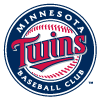 Bailey Ober, SP, Twins: Ober failed to break camp in the big-league rotation, but for the first three months after he was called up in late April, he looked like the pitching pickup of the year, outperforming many of the big-name prospects who debuted around that time. In his first 16 starts, Ober cruised to a 2.76 ERA and 0.97 WHIP, though his peripherals disagreed about the extent to which he was overperforming. FIP had him at a still-strong 3.57, but xFIP pegged him at a forgettable 4.35. Both numbers looked at Ober's 24.5 percent strikeout rate and 4.9 percent walk rate and liked what they saw, but FIP looked at his actual 1.05 HR/9, while xFIP looked at his 32.4 percent groundball rate and figured that his home run rate couldn't stay low for long if he kept allowing so many fly balls. Ober's xFIP proved to be the more accurate prognosticator over his recent slump, though his 6.75 ERA over that six-start stretch overshot all the estimators by a wide margin. Ober's 23.1 percent strikeout rate and 6.2 percent walk rate in those outings represented only small steps back from his numbers up to that point, but all the fly balls came back to bite him, as he allowed 2.6 HR/9. His groundball rate actually improved slightly (to 36.0 percent), but his HR/FB rate jumped from a fortunate 7.3 percent to an unlucky 20.8 percent. That led to a demotion back to the minors on Monday, and while he could still return to the rotation in September, don't expect him to fully recapture his first-half form.
Bailey Ober, SP, Twins: Ober failed to break camp in the big-league rotation, but for the first three months after he was called up in late April, he looked like the pitching pickup of the year, outperforming many of the big-name prospects who debuted around that time. In his first 16 starts, Ober cruised to a 2.76 ERA and 0.97 WHIP, though his peripherals disagreed about the extent to which he was overperforming. FIP had him at a still-strong 3.57, but xFIP pegged him at a forgettable 4.35. Both numbers looked at Ober's 24.5 percent strikeout rate and 4.9 percent walk rate and liked what they saw, but FIP looked at his actual 1.05 HR/9, while xFIP looked at his 32.4 percent groundball rate and figured that his home run rate couldn't stay low for long if he kept allowing so many fly balls. Ober's xFIP proved to be the more accurate prognosticator over his recent slump, though his 6.75 ERA over that six-start stretch overshot all the estimators by a wide margin. Ober's 23.1 percent strikeout rate and 6.2 percent walk rate in those outings represented only small steps back from his numbers up to that point, but all the fly balls came back to bite him, as he allowed 2.6 HR/9. His groundball rate actually improved slightly (to 36.0 percent), but his HR/FB rate jumped from a fortunate 7.3 percent to an unlucky 20.8 percent. That led to a demotion back to the minors on Monday, and while he could still return to the rotation in September, don't expect him to fully recapture his first-half form.
 Luis Arraez, 1B/2B, Marlins: It's all but official at this point: Arraez isn't going to hit .400. He last finished a game north of that mark back on June 24, and while he was back above .380 on July 29, he entered play on Wednesday with a .350 average. He'd need 41 consecutive hits to raise his average back to .400 and would then need to continue to hit .400 the rest of the way. The damage has been done by an awful August that saw him hit just .228/.235/.337, good for a nice round wRC+ of 50. Arraez does technically have his worst strikeout rate of the season this month, but his 6.9 percent mark is still absurdly good. His quality of contact has been very poor, but that's always the case with him; his 18.1 percent hard-hit rate this month isn't all that much better than yours or mine, but it's not much worse than his 22.2 percent mark through the end of May, at which point he was hitting .381/.438/.466. On the whole, Arraez's slump looks like a slight drop in batted-ball quality mixed with a healthy dose of bad luck, as his drop in BABIP from .398 through the end of July to .228 thus far in August can't be explained entirely by his marginally weaker contact.
Luis Arraez, 1B/2B, Marlins: It's all but official at this point: Arraez isn't going to hit .400. He last finished a game north of that mark back on June 24, and while he was back above .380 on July 29, he entered play on Wednesday with a .350 average. He'd need 41 consecutive hits to raise his average back to .400 and would then need to continue to hit .400 the rest of the way. The damage has been done by an awful August that saw him hit just .228/.235/.337, good for a nice round wRC+ of 50. Arraez does technically have his worst strikeout rate of the season this month, but his 6.9 percent mark is still absurdly good. His quality of contact has been very poor, but that's always the case with him; his 18.1 percent hard-hit rate this month isn't all that much better than yours or mine, but it's not much worse than his 22.2 percent mark through the end of May, at which point he was hitting .381/.438/.466. On the whole, Arraez's slump looks like a slight drop in batted-ball quality mixed with a healthy dose of bad luck, as his drop in BABIP from .398 through the end of July to .228 thus far in August can't be explained entirely by his marginally weaker contact.
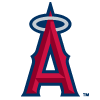 Lucas Giolito, SP, Angels (for now): Giolito isn't listed as a faller here purely because he was waived by the Angels on Tuesday, as that was more a curious bit of roster management by an Angels franchise looking to cut costs in September after seeing its playoff hopes evaporate than a reflection of Giolito's actual standing in the game. Still, if his recent performance was in line with expectations, perhaps the Angels wouldn't be in position to be waiving five players. Giolito's ERA spiked to 4.90 last season, but a 3.79 SIERA suggested that he was more or less fine. He exactly matched that mark with a 3.79 ERA in his 21 starts with the White Sox prior to the trade, so it's easy to see why the Angels made a move for him as a rental. His six starts since the deal didn't go remotely as planned, and he'll end his time in Orange County having produced a 6.89 ERA and 1.47 WHIP for his rapidly collapsing team. Both his 22.8 percent strikeout rate and 10.1 percent walk rate represented steps in the wrong direction, and he'll be a boring streaming option at best wherever he ends up next unless he reverses that trend.
Lucas Giolito, SP, Angels (for now): Giolito isn't listed as a faller here purely because he was waived by the Angels on Tuesday, as that was more a curious bit of roster management by an Angels franchise looking to cut costs in September after seeing its playoff hopes evaporate than a reflection of Giolito's actual standing in the game. Still, if his recent performance was in line with expectations, perhaps the Angels wouldn't be in position to be waiving five players. Giolito's ERA spiked to 4.90 last season, but a 3.79 SIERA suggested that he was more or less fine. He exactly matched that mark with a 3.79 ERA in his 21 starts with the White Sox prior to the trade, so it's easy to see why the Angels made a move for him as a rental. His six starts since the deal didn't go remotely as planned, and he'll end his time in Orange County having produced a 6.89 ERA and 1.47 WHIP for his rapidly collapsing team. Both his 22.8 percent strikeout rate and 10.1 percent walk rate represented steps in the wrong direction, and he'll be a boring streaming option at best wherever he ends up next unless he reverses that trend.
Jurickson Profar, OF, Free Agent: The fact that Profar was still sitting without a team in mid-March perhaps should have told us something about how the league expected his season to go. When he signed with the Rockies on March 19, however, any fears went out the window, with drafters excited to land a competent MLB vet who should have minimal competition for starts in the best hitters' park in the league. Profar did in fact earn plenty of playing time, with his 472 plate appearances ranking third on the team, but he was released Sunday after hitting just .236/.316/.364 on the year, good for a 72 wRC+ once Coors is accounted for. Profar added a mere eight homers and one steal, further limiting his fantasy impact. He was particularly poor in the month of August, slashing .211/.270/.333, so it makes sense the Rockies wanted to get looks at younger alternatives. The main issue for Profar this season is that his strikeout rate took a step back, coming in at 18.2 percent after sitting below 16 percent for five straight seasons. 18.2 percent is still a strong mark in that category, but when you don't hit the ball with any authority (Profar's 3.9 percent barrel rate this year is a match for his 4.0 percent career mark), you need to make an outlier amount of contact to be a threat at the plate. Heading into his age-31 season, it's not clear Profar is going to get many more chances as an everyday player.

